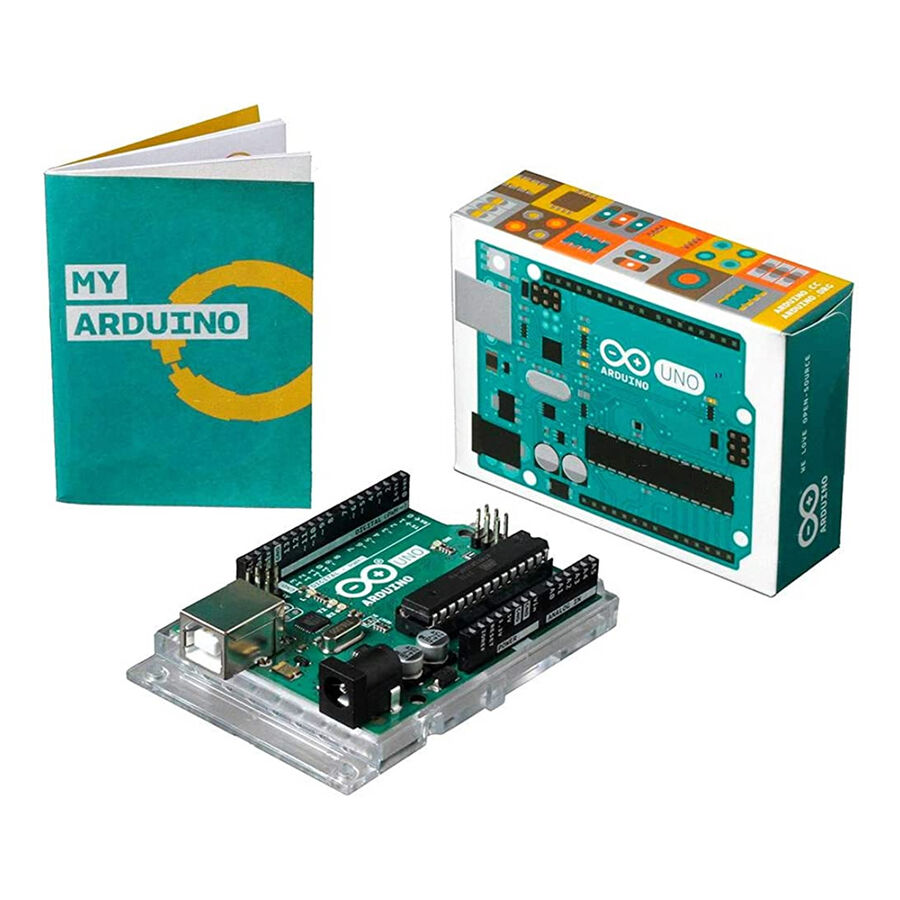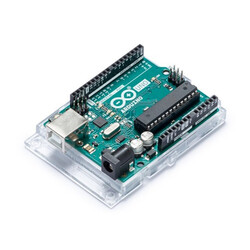Arduino Uno R3-Original
Original Arduino Uno R3The product is a development board that uses ATmega328P processor. Designed as a university project by 5 friends in Italy, Arduino products soon attracted great interest and began to be used by people, students and even experts all over the world as a hobby. The reason why it attracted so much attention and growth in a short time is that the design of both the software and the circuits of the microcontrollers in the market is difficult and it is used only by professionals and is costly.
Arduino products offer the opportunity to make very nice projects with just a short research without experience and knowledge. You can also do more professional work by specializing over time. With the open source code philosophy adopted by Arduino, projects are shared by everyone and you can find everything you can do with Arduino on the internet.
Arduino Uno R3 is a microcontroller module with 14 digital pins (6 tansei pwm outputs), 6 analog input pins. It works with 5 V. Learning and programming its processor is fairly simple.
Since Arduino shares all its information, many clones of the products are produced. While the original Arduino products are manufactured in Italy, clone products usually come from China. Original products are better quality, robust and stable than clones.
Original Arduino Uno R3 Technical Specifications
- Microcontroller: ATmega328P
- Working Voltage: 5V
- Input Voltage (recommended): 7-12V
- Input Voltage (limit): 6-20V
- Digital I / O Pins: 14 (of which 6 are PWM output)
- Analog Input Pins: 6
- Current per I / O: 40 mA
- Current for 3.3V Output: 50 mA
- Flash Memory: 32 KB (ATmega328) 0.5 KB of bootloader
- SRAM: 2 KB (ATmega328)
- EEPROM: 1 KB (ATmega328)
- Clock Speed: 16 MHz
- Length: 68.6 mm
- Width: 53.4 mm
- Weight: 25 g
Useful Links
- Arduino Main Board TypesYou can examine.
- Arduino Sensor and Module TypesYou can examine.
- Arduino Education SetsYou can examine.
- You can browse the content on our blog:Arduino Clone and What is the Original Difference?
Original Arduino Uno R3
- Features
- Payment Options
- Comments (10)
- Images
-
Arduino Uno R3-Original
Original Arduino Uno R3The product is a development board that uses ATmega328P processor. Designed as a university project by 5 friends in Italy, Arduino products soon attracted great interest and began to be used by people, students and even experts all over the world as a hobby. The reason why it attracted so much attention and growth in a short time is that the design of both the software and the circuits of the microcontrollers in the market is difficult and it is used only by professionals and is costly.
Arduino products offer the opportunity to make very nice projects with just a short research without experience and knowledge. You can also do more professional work by specializing over time. With the open source code philosophy adopted by Arduino, projects are shared by everyone and you can find everything you can do with Arduino on the internet.
Arduino Uno R3 is a microcontroller module with 14 digital pins (6 tansei pwm outputs), 6 analog input pins. It works with 5 V. Learning and programming its processor is fairly simple.
Since Arduino shares all its information, many clones of the products are produced. While the original Arduino products are manufactured in Italy, clone products usually come from China. Original products are better quality, robust and stable than clones.
Original Arduino Uno R3 Technical Specifications
- Microcontroller: ATmega328P
- Working Voltage: 5V
- Input Voltage (recommended): 7-12V
- Input Voltage (limit): 6-20V
- Digital I / O Pins: 14 (of which 6 are PWM output)
- Analog Input Pins: 6
- Current per I / O: 40 mA
- Current for 3.3V Output: 50 mA
- Flash Memory: 32 KB (ATmega328) 0.5 KB of bootloader
- SRAM: 2 KB (ATmega328)
- EEPROM: 1 KB (ATmega328)
- Clock Speed: 16 MHz
- Length: 68.6 mm
- Width: 53.4 mm
- Weight: 25 g
Useful Links
- Arduino Main Board TypesYou can examine.
- Arduino Sensor and Module TypesYou can examine.
- Arduino Education SetsYou can examine.
- You can browse the content on our blog:Arduino Clone and What is the Original Difference?





















